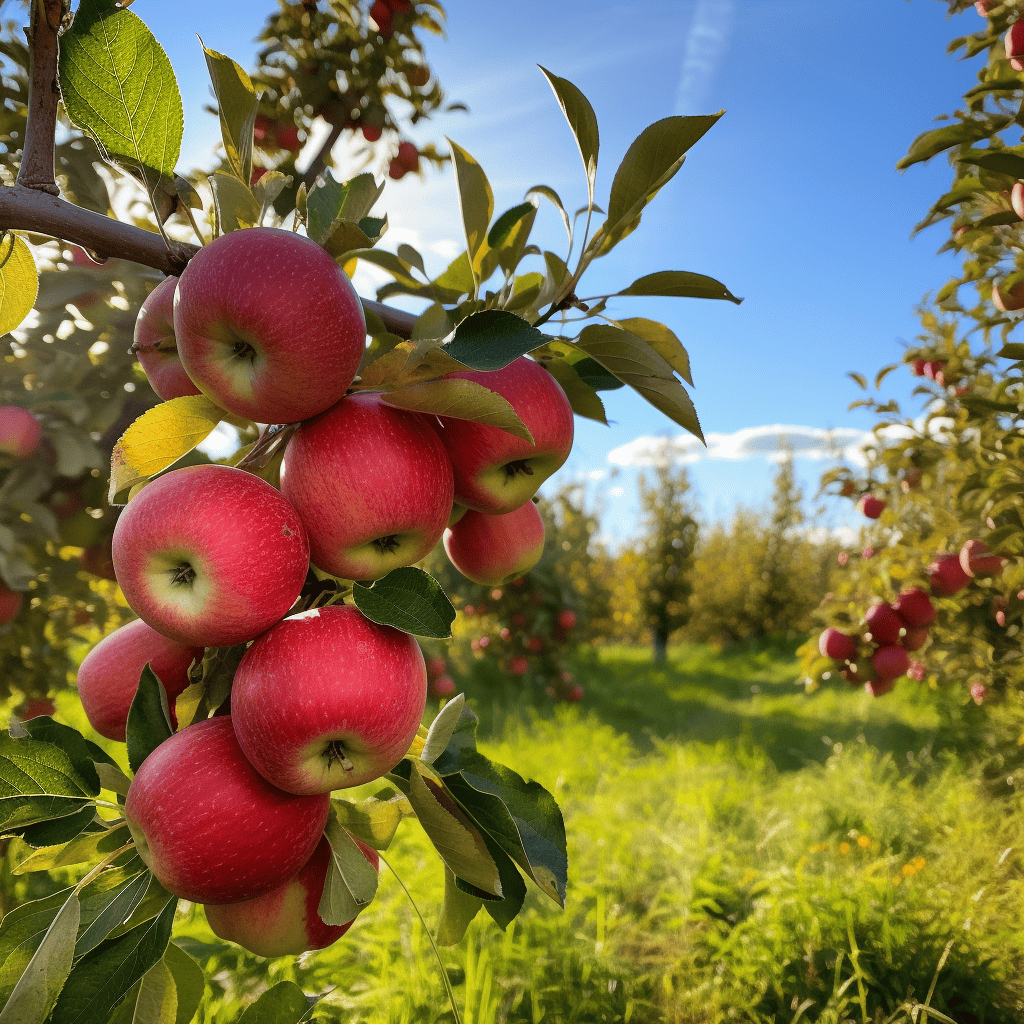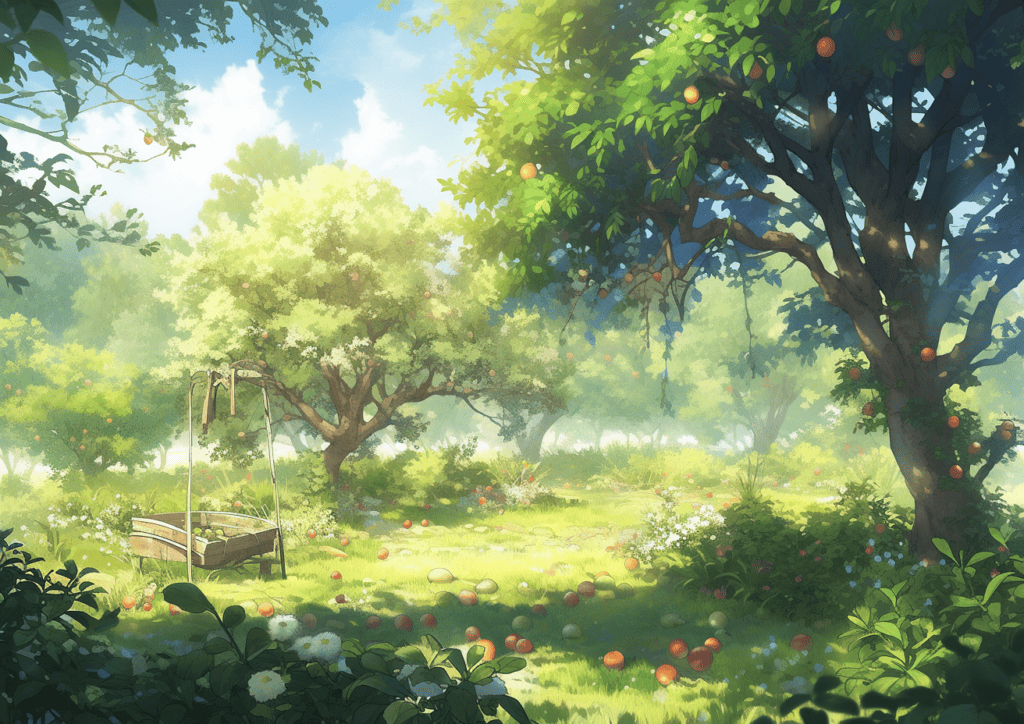Introduction to Apple Tree Guilds

Apple tree guilds are a fascinating and innovative approach to sustainable agriculture that incorporates the principles of permaculture. In a fruit tree guild, such as an apple tree guild, diverse plants are strategically placed around the central fruit tree to create a self-sustaining ecosystem that supports and enhances the growth and productivity of the tree.
This concept revolutionizes traditional monoculture farming practices by mimicking nature’s interconnected ecosystems. Essentially, apple tree guilds function as miniature, high-yield gardens where every plant plays a vital role in creating a harmonious and productive environment.
The idea behind this style of growing is to create an ecosystem that works together symbiotically, providing essential nutrients, promoting soil health, attracting beneficial insects, repelling pests, and maximizing fruit production. Underplantings or companion plants are carefully selected based on their ability to complement the apple trees’ needs.
For instance, nitrogen-fixing plants like legumes can provide essential nutrients for the fruit trees, while dynamic accumulators help bring up minerals from deeper soil levels. Additionally, certain underplantings can act as living mulch or walkable ground cover to suppress grass growth around the trees’ base and minimize competition for water and nutrients.
One popular plant often included in apple tree guilds is borage (Borago officinalis). Borage attracts bees with its vibrant blue flowers while also repelling pests such as tomato hornworms.
Other herbs like comfrey (Symphytum officinale) or mint (Mentha spp.) provide dynamic accumulators that accumulate minerals from deep in the soil and make them available for uptake by the apple trees’ shallow roots. By employing permaculture techniques such as apple tree guilds instead of conventional monoculture farming methods, we can create more sustainable agricultural systems that not only produce abundant fruits but also foster biodiversity and improve overall ecosystem health.
It is within these interconnected ecosystems that we find the incredible potential of apple tree guilds to revolutionize fruit tree cultivation. In the following sections, we will delve deeper into the specific components and design principles of apple tree guilds, exploring their benefits, challenges, and real-world examples of successful implementations.

Understanding Permaculture Principles
Permaculture, a term coined by Bill Mollison and David Holmgren in the 1970s, is a holistic approach to designing sustainable systems that mimic natural ecosystems. At its core, permaculture seeks to create resilient and self-sufficient environments by working with nature rather than against it.
One of the fundamental principles of permaculture is the concept of a guild, which plays a significant role in apple tree cultivation. A guild, in permaculture terms, refers to a mutually beneficial community of plants that support each other’s growth and provide various ecosystem services.
In the context of apple tree cultivation, an apple tree guild consists of carefully selected companion plants that enhance soil fertility, suppress grass and weed competition, attract beneficial insects for pest control, and improve overall fruit production. By creating a harmonious interplay between different plant species within the guild, permaculturists aim to achieve high-yield gardens with healthy fruit production while minimizing external inputs.
In building an apple tree guild, several permaculture techniques come into play. For instance, underplantings are commonly used to maximize space utilization and optimize resource allocation within the ecosystem.
Nitrogen-fixing plants like legumes are often chosen as under-plantings around apple trees because they have the ability to convert atmospheric nitrogen into forms accessible by other plants. This not only provides readily available nutrients for the apple trees but also improves soil health in the long run.
Furthermore, disease-resistant plants can be strategically incorporated into apple tree guilds to reduce vulnerability to common pests and diseases. For instance, planting aromatic herbs such as thyme or lavender can help deter insect pests from attacking both the apple trees and their companion plants.
This synergy between different plant species creates a diverse and balanced ecosystem that fosters biodiversity and reduces reliance on chemical interventions. Understanding permaculture principles is essential for successful apple tree guild implementation.
By embracing the concept of guilds and harnessing the power of interplanting, permaculturists can create thriving ecosystems that promote healthy fruit production, improve soil health, and increase biodiversity. Through careful consideration of companion plants, under-plantings, nitrogen fixation, and disease resistance, apple tree guilds exemplify the potential of permaculture as a sustainable and regenerative style of growing food.
The Concept of a Guild in Permaculture
In the realm of permaculture, the concept of a guild is central to creating sustainable and resilient ecosystems. A guild is a carefully designed interplanting system that brings together a combination of plants, each playing a specific role to support the growth and well-being of a central focal plant, in this case, the apple tree.
This permaculture technique aims to mimic natural ecosystems and maximize their beneficial interactions while minimizing any negative impacts. When it comes to apple tree guilds, the plants chosen are selected based on their ability to complement and enhance the growth of the apple tree.
Each member serves a unique function within the guild ecosystem. The primary aim is to create a harmonious environment that supports optimal fruit production while addressing various ecological needs such as pest control, nutrient cycling, and soil enrichment.
One important aspect of an apple tree guild is selecting disease-resistant companion plants that can help protect the tree from common pests and diseases. By strategically placing disease-resistant plants like borage or garlic near the apple tree, you can create a dynamic and diverse ecosystem that naturally repels harmful insects or fungal pathogens.
These companion plants act as natural allies, attracting beneficial insects that prey on pests or releasing compounds that inhibit the growth of harmful organisms. Furthermore, under-plantings in an apple tree guild can play an instrumental role in improving soil health by enhancing nutrient cycling processes.
Nitrogen-fixing plants like legumes are often incorporated into guilds since they have specialized root structures capable of converting atmospheric nitrogen into essential nutrients for plant growth. As these legumes establish symbiotic relationships with nitrogen-fixing bacteria, they enrich the soil with vital nutrients required for healthy fruit production.
Additionally, ground cover crops like clover or thyme can serve multiple purposes within an apple tree guild setup. Not only do they suppress grasses and weeds around the base of the tree by acting as living mulch, but they also act as a walkable ground cover, creating a more sustainable and low-maintenance growing environment.
These ground covers help retain soil moisture, prevent erosion, and provide habitat for beneficial insects and wildlife. The concept of a guild in permaculture is an integral part of designing resilient and productive ecosystems.
By carefully selecting disease-resistant companion plants, nitrogen-fixing species, and diverse ground covers, an apple tree guild can create a thriving ecosystem that promotes fruit production while improving soil health and attracting beneficial insects. The intricate web of relationships within the guild ensures that each plant plays its part in supporting the growth of the central apple tree, resulting in high-yield gardens that mimic nature’s wisdom.
